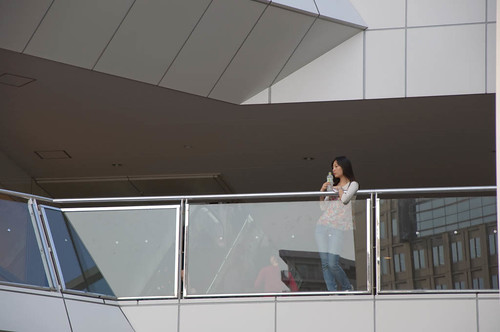
One of the most impressive buildings is the Main entrance hall and lobby of the famous Imperial hotel. Constructed in 1923, the hotel was designed by Frank Lloyd Wright one of the greatest architect of the twentieth century.

Inside the reconstructed lobby, there is the table used to sign the Treaty of Portsmouth an a cafeteria with live music


The Miyasu Court district from the Kyoto prefecture (1886), wax figures recreate a court scene of that era.


The cabinet library, formerly at Chiyoda ku Tokyo (1911), This library was used as the central library of the Meiji government.
The Bank of Kawasaki formely at Nihonbashi Tokyo (1927). The building was part of the old center of Japan.
The Shinohashi bridge, formely at Koto ku Tokyo, over Sumida River (1912). During the kanto earthquake in 1923, many lives were saved when the other bridges were destroyed and this bridge was used as scape route.

Main gate of the Kanazawa prision formely at Kanazawa, Ishikawa prefecture (1907).


The St. Francis Xavier’s Cathedral, formely at Chukyoku in Kyoto (1890). The cathedral was built commemorate the missionary, it is used now to perform wedding ceremonies.



Kurehaza theater, an “Important Cultural Property” formerly at Nishihonmachi ikeda, Osaka prefecture (1892), the theater is currently used for performances.

Summer house of Lafcadio Hearn, formely at Jounokoshi, Yaizu, Shizuoka prefecture (1868), and the Kinotocho barber shop (1910), formely at Bunkyo ku tokyo.


The Ujiyama Post office “Important Cultural Property”, formerly at Ise Mie prefecture (1909), the post office is still in operation and you can send postcards from this place.



The Machinary hall, Formerly at Oimachi, Shinagawa in Tokyo (1872). At this building there is also the Ring Spinning frame “Important Cultural Property” (1983), the last machine used in the cotton spinning process.


Between the buildings from overseas, the most outstanding are the Japanese evangelical church, formerly in Seattle, Washington (1907), and the Japanese Immigrants’ assembly hall from Hilo, Hawaii (1889), both used by the Japanese immigrants of the era.


Mused Gymnasium for martial Arts, Fourth national High school. Originally at Kanazawa, Ishikawa prefecture (1917).
Español






















































